Muckruss House
Houses within 15km of this house
Displaying 96 houses.
Houses within 15km of Muckruss House
Displaying 96 houses.
| House name | Description | |
|---|---|---|
| Fort Prospect (Clonakilty) | Reverend Benjamin Swete was leasing this property to Richard Wheeler at the time of Griffith's Valuation, when it was valued at £15 15s. In 1837, Lewis notes it as the seat of R. Wheeler. It is still extant. | |
| Mount Beamish | John Beamish was leasing this property to Rev. John Baldwin at the time of Griffith's Valuation, when it was valued at £15. In 1837 Lewis records it as the seat of J. Beamish. Leet noted it as the seat of Rev. Samuel Beamish in 1814. Farm buildings exist at the site now. | |
| Drombofinny House | Benjamin Daunt was leasing this property from the Devonshire estate at the time of Griffith's Valuation, when it was valued at almost £8. It is labelled Drombofinny House on the 25-inch Ordnance Survey map of the 1890s. A house still exists at the site. | |
| Kilmoylerane House | Richard J. Long was leasing this property from the Devonshire estate at the time of Griffith's Valuation, when it was valued at £15. A house and extensive farm buildings exist at the site. | |
| Kilrush House | Thomas Beamish held this property in fee at the time of Griffith's Valuation, when it was valued at £24. Lewis records it as the seat of A. Poole in 1837. The National Inventory of Architectural Heritage records that an earlier house, built around 1650, originally stood at this site and the extant house may incorporate parts of that earlier structure. |

|
| Lisbehagh | Sampson Beamish was leasing this property to John Donovan at the time of Griffith's Valuation, when it was valued at £8. | |
| Kill House | Richard J. Long was leasing Kill House from the Attley [?] estate at the time of Griffith's Valuation, when it was valued at £8. There is still a house at the site. | |
| Inchydoney House | At the time of Griffith's Valuation, Thomas Hungerford was leasing this property from the Ecclesiastical Commissioners when it was valued at £22. Described by Lewis as "Island House" and the seat of T. Hungerford in 1837. In 1906 it was owned by Mary Sandes Hungerforde and valued at £31 15s. The house is now used as a religious retreat centre. |

|
| Youghals House | A Miss Walsh was leasing this property from the Earl of Shannon's estate at the time of Griffith's Valuation, when it was valued at £14. This house is still extant. |

|
| The Retreat (Island) | Richard Beamish was leasing this property from Winspur Toye at the time of Griffith's Valuation, when it was valued at £20. A house is still extant at the site. | |
| Kilgarriff House | Henry Bence-Jones, a distinguished physican and scientist, was leasing this property from Rev. Henry Stewart, at the time of Griffith's Valuation, when it was valued at £24 10s. In 1837, Lewis refers to it as the seat of Capt. Davis. A house still exists at the site. | |
| Bushmount | Not visible on the 1st edition Ordnance Survey map but named as Bushmount on the 25-inch edition of the 1890s. Johanna Deasy was leasing this property from the Earl of Shannon's estate at the time of Griffith's Valuation, when it was valued at £22 10s. The Deasy family were brewers in the town of Clonakilty. [Now the site of St. Paul's Nursing Home.] | |
| Fern Hill | AT the time of Griffith's Valuation, this property was being leased from the Earl of Shannon's estate by Anna Atkins. It was then valued at £28. In 1837, Lewis refers to it as the seat of W.F. Atlkin. Now part of the Fernhill House hotel complex. |

|
| Lower Tawnies Cottage | Rev. Henry Stewart was leasing this property from the Earl of Shannon's estate at the time of Griffith's Valuation, when it was valued at £13 15s. Lewis notes it as the seat of the Rev. Dr. Stewart in 1837. It is still extant but unoccupied. |

|
| Millville | Thomas and James Allen were leasing this property from the Earl of Shannon's estate at the time of Griffith's Valuation, when it was valued at £15 and the adjacent mills at £37. The house is still extant. Modern housing now occupies the site of the mill. | |
| Scartagh Cottage | Tradition locally suggests Scartagh Cottage was originally the property of the Townsend family. By the time of Griffith's Valuation, it was being leased by Henry Galway to Matthew O'Hea. Various members of the Galway family held small amounts of land in the area while Matthew O'Hea, of the War Office, London, is recorded as the owner of 70 acres in county Cork in the 1870s. Scartagh Cottage has been replaced by a convent on the 25-inch Ordnance Map towards the end of the nineteenth century and that building is still extant. | |
| Ahalisky | William Bence-Jones held this property in fee at the time of Griffith's Valuation when it was valued at £14. A plant nursery is identified at this location on the 1st edition Ordnance Survey map. Extensive farm buildings occupy the site now. | |
| Kilmaloda House | Thomas Beamish held this property in fee at the time of Griffith's Valuation, when it was valued at £50. In 1837, Lewis refers to it as the seat of Sampson Beamish. In 1906 it was owned by Sampson Beamish and valued at £68 15s. Local sources suggest it was built by the earlier Sampson Beamish and occupied by his descendents until the mid twentieth century when it came into the hands of the McCarthy-Murrough family. It is still extant and occupied. In 2013 it was offered for sale. |

|
| Beaumont | William Wright was leasing this property from Rev. Thomas Beamish at the time of Griffith's Valuation, when it was valued at £10 10s. Built after the 1st edition Ordnance Survey map opposite the site of a diocesan school. In 1814, however, Leet noted Beaumount as the seat of William Beamish. Mrs. Susan Beamish, of Beaumont, Clonakilty, was the owner of over 1300 acres in county Cork in the 1870s. This house is no longer extant. | |
| Mill House (Ballinascarty) | William G. Harris was leasing this property to Charles Connell at the time of Griffith's Valuation, when it was valued at £7 15s and the adjacent mill valued at £41. It is labelled Mill House on the 25-inch Ordnance Survey map of the 1890s, though the corn mills are labelled disused at that time. A house is still extant at the site though the mills are now ruinous. | |
| Skeaf House | Herbert Gillman was leasing this property from William Austin at the time of Griffith's Valuation, when it was valued at £20 15s. Lewis recorded it as the seat of W. Austin in 1837. Together with other Austen property it was offered for sale in the Encumbered Estates Court in June 1851. In the 1870s it was the residence of John E. O'Sullivan though it was offered for sale by him in the Landed Estates Court in April 1880 when it was described as "a fine residence". A house still exists at the site. |
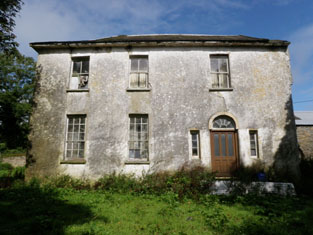
|
| Kilnagross | At the time of Griffith's Valuation, William Sullivan was leasing this property to Rev. Somerset Townsend, when it was valued at almost £12. In 1837, it was the seat of Rev. W. Sullivan. It is no longer extant. | |
| Shannonvale House & Mill | At the time of Griffith's Valuation, the Misses Newman were leasing this property to T. & J. Allen, The house was valued at £25 and the mill at £225. Lewis records it as the seat of T. Allin in 1837. The mills afterwards became the property of the Bennett family and later of the Rank company and continued in business until 1963. The house is still extant. In 1786 Wilson refers to a house in this area as "Mount-Shannon, the seat of Dr. Calnan". |
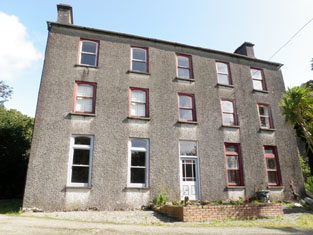
|
| Ardnacrow House | Though buildings existed at this site in the 1830s Ardnacrow House is only labelled on the later 25-inch Ordnance Survey map of the 1890s. At the time of Griffith's Valuation, Winthrop Sealy held this property in fee when it was valued at £29. The original house is now ruined and a modern house has been constructed nearby. | |
| Burren House | Richard Sealy was leasing this property to Mrs. Hestor Sealy at the time of Griffith's Valuation, when it was valued at £13 10s. In 1906 it was owned by the representatives of Ludlow Sealy and valued at £21 10s. According to the current owners, Burren House was built on the site of a McCarthy Castle in the 1790s. It has now been completely restored. See www.burrenhouse.net. |
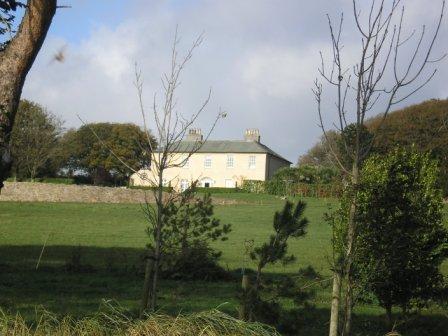
|
| Maryborough | Miss Jane Clerke was leasing this property from Thomas Beggs [Biggs] at the time of Griffith's Valuation, when it was valued at £14. It is likely that this is the same as Thomas Biggs of Dunmanway. In 1837, Lewis had noted the house as the seat of Maj. Broderick. The house appears to have been replaced by a modern building but the remains of the large walled garden are still extant, enclosing large modern farm sheds. | |
| Gortaglanna House | At the time of Griffith's Valuation, Hibernicus Scott senior was leasing this property to Hibernicus Scott, junior, when it was valued at £34 10s. Lewis records it as the seat of Maj. M. Scott in 1837. It is still extant and occupied. |
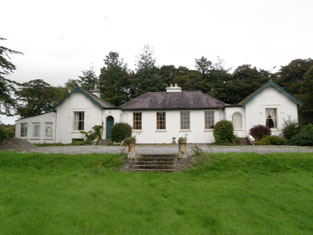
|
| Glenville | Richard Robinson was leasing this property to Nicholas Bowen at the time of Griffith's Valuation, when it was valued at £11. In 1837, Lewis noted it as the seat of R.B. Robinson. It is now a farm guesthouse. |
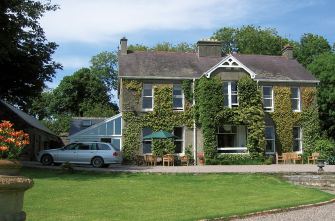
|
| Harbour View | John Bowen was leasing this property from William Stawell at the time of Griffith's Valuation, when it was valued at £6. This may be the property known as Harbour View which is still extant. | |
| Seaview Cottage | At the time of Griffith's Valuation, John Bowen was leasing this property to William Bernard, when it was valued at £16. Lewis notes in 1837 that Mr. Bowen had built this and several other houses in the locality as bathing lodges. Leet mentions Seaview as the seat of John Powell in 1814. Seaview is now a stud farm. | |
| Flaxfort House or Seaview House | At the time of Griffith's Valuation, William Scott was leasing this propert to Rev. Robert Taylor, when it was valued at almost £10. Lewis records it as the residence of Rev. Robert Taylor, PP, in 1837. It is labelled Seaview House on the 1st edition Ordnance Survey Map but it had become known as Flaxfort House soon after. | |
| Castle View Mill House | At the time of Griffith's Valuation, Francis Bennett was leasing this property to James Hayes. It was valued at £13 10s and the ajacent mill had a valuation of £56. In 1837, Lewis noted it as the seat of J. Hayes. The mill buildings are still extant at this site. |

|
| Coolwood House | John Kingston was leasing this property from the Earl of Shannon's estate at the time of Griffith's Valuation, when it was valued at £8. It is not labelled on the 1st edition Ordnance Survey map but appears on the later 25-inch map as Coolwood House. It is still extant and occupied. | |
| Castle Freke | At the time of Griffith's Valuation, it was held in fee by Lady Carbery and valued at £90. In 1906 it was held by the trustees of Lord Carbery and valued at £136 . The existing building at Castlefreke was constructed at the end of the eighteenth century, replacing an earlier castle which had belonged to the Barry family, the original owners of the estate. It was modified in the late nineteenth century but subsequently gutted by fire in 1910 and restored by 1913. It was sold by John, 10th Lord Carbery, after WWI. In the early 1940s the Irish Tourist Association survey reported that it was unoccupied but in good repair and owned by the Land Commission. Castlefreke fell into ruin throughout the twentieth century but a portion of it has since been restored |
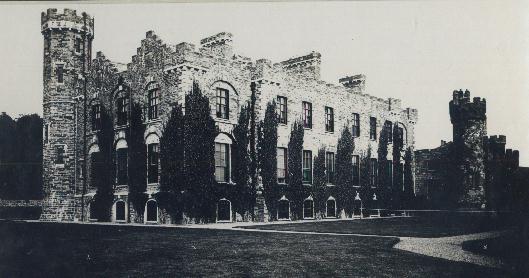
|
| Mahon Abbey House | James Harton was leasing this property from "the ladies Boyle" at the time of Griffith's Valuation, when it was valued at £12 5s. It is still extant and occupied. |
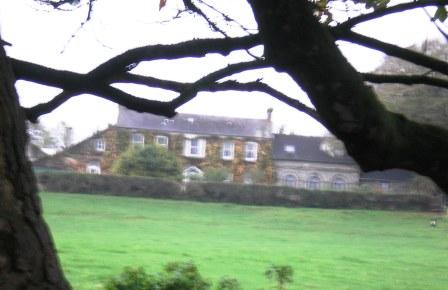
|
| Lislevane Cottage | Lislevane Cottage was being leased by Alexander Deane from "the ladies Boyle" at the time of Griffith's Valuation, when it was valued at £9. There is a large farm at the site now with a house possibly dating from the early twentieth century. |

|
| Spital Mill House | William Harris was leasing Spital Mill and its house to Charles Connell at the time of Griffith's Valuation, when the whole complex was valued at over £50. The mill buildings are labelled "in ruins" on the 25-inch map, published in the 1890s. A modern industrial complex is now located close to the site. | |
| Balteenbrack | Rev. Patrick Sheehy was leasing this property from the representatives of Henry Galway at the time of Griffith's Valuation, when it was valued at £10. There is still an extant house at the site. | |
| Ballyva House | Ballyva house was being leased by James Hugh Smith-Barry to James R. Deane at the time of Griffith's Valuation when it was valued at £16. Lewis refers to it as the seat of M. Galway in 1837. A house is still extant at the site. | |
| Dunowen | Dunowen House was being leased jointly by the Bandon and Smith-Barry estates to George Sandes at the time of Griffith's Valuation, when it was valued at £19. In 2009 it was offered for sale. |

|
| Ballyduvane House | Ballyduvane House was held in fee by Mrs. Eliza Beecher at the time of Griffith's Valuation, when it was valued at £25 10s. Lewis refers to it as the seat of M. Becher in 1837. There is still an extant house at the site. | |
| Ballyduvane | Edward Herrick was leasing this property from Mrs. Eliza Beecher at the time of Griffith's Valuation, when it was valued at £12 5s. Lewis refers to it as the seat of E, Herrick in 1837. In 1814 Leet noted it as the residence of Thomas Herrick. Referred to by Slater as the seat of M.A.R. Beecher in 1894. There is still a house at the site. | |
| Springmount or Carhoo House | At the time of Griffith's Valuation, William Beamish was leasing this property from the Earl of Bandon's estate, when it was valued at £11 10s. On the 25-inch map, published in the 1890s, it is labelled Carhoo House. A house and farm buildings are still extant at the site. | |
| Ballyvackey House | Ballyvackey House was held in fee by Mrs. Ellen Alleyn at the time of Griffith's Valuation, when it was valued at £11. In the late 1770s and 1780s it was occupied by the Allen family. It is not shown on the 25-inch Ordnance Survey map of the 1890 and is no longer extant. | |
| Camus House | George Hungerford was leasing Camus House from the Smith-Barry estate at the time of Griffith's Valuation, when it was valued at £19. It does not appear on the 6-inch Ordnance Survey map but is labelled Camus House on the 25-inch map of the 1890s. There is still a house at this site. | |
| Sunmount | George Beamish was leasing Sunmount to Rev. W. John Day at the time of Griffith's Valuation, when it was valued at £20 5s. Lewis refers to Ballyvackey as the seat of G. Beamish in 1837. In 1906 it was owned by William Hungerford and valued at £23. It is no longer extant. | |
| Greenfield House | The representatives of Henry Galway were leasing this property from Mrs. Honoria O'Hea at the time of Griffith's Valuation, when it was valued at £20. Lewis refers to it as the seat of Henry Galway in 1837. He also refers to "Green Park" in the parish of Creagh as the seat of John Gallway. In 1894 Slater refers to the house as the seat of Denis McCarthy Gallway. Greenfield House is no longer extant. | |
| Ballincurrig | Mrs. Susan Woodbourne was leasing this property from "the Ladies Boyle" at the time of Griffith's Valuation, when it was valued at £13. There is still a house at this site. | |
| Court Macsherry | An earlier house had existed in the grounds of the present building. The "Ladies Boyle" held Court Macsherry House in fee at the time of Griffith's Valuation, when it was valued at £30. The building seems to have become the Esplanade Hotel by the time the 25-inch map was published in the 1890s. The Irish Tourist Association survey of the 1940s refers to it as the "beautiful demesne and summerhouse of the Earl of Shannon, now reconstructed as the Esplanade Hotel". This building continues today as the Courtmacsherry Hotel (www.courtmacsherryhotel.ie). |

|
| Kincraigie (Woodview) | Woodview was being leased by the Ladies Boyle to William B. Leslie at the time of Griffith's Valuation, when it was valued at £19 15s. Lewis refers to the seat of J. Leslie in Courtmacsherry in 1837. The property later bacame Kincraigie where William lived with his wife, Jane Florence McCartie, the widow of Horace Townsend. Jane's son, also Horace, owned the house until the early twentieth century. Later the home of the Travers family. In the 1940s the Irish Tourist Association Survey refers to it as "once a magnificent mansion formerly the home of the Leslies, now almost deserted". At that time it was owned by a Mr. Barrett. It is now a ruin. | |
| Lislee House [Lisleetemple Glebe] | Rev. James Stewart was leasing this property from the Boyle estate at the time of Griffith's Valuation, when it was valued at £24 5s. Lewis refers to it as the seat of Rev.Stewart in 1837. It is still extant and now known as Lislee House. |
![Photo of Lislee House [Lisleetemple Glebe]](https://landedestates.ie/storage/img/orig/1508.jpg)
|
| Seacourt | Henry Longfield held this property in fee at the time of Griffith's Valuation, when it was valued at £21 5s. Lewis also refers to it as his seat in 1837. In 1906 it was owned by Mountifort Longfield and valued at £26 10s. It is still extant and was recently for sale see http://www.michaelhdaniels.com/ |

|
| Ballylangy House | Occupied by John Sealy at the time of Griffith's Valuation, on lease from the representatives of Thomas Sealy. The house was valued at £16 at the time. I February 1890 Ballylangy was included in the sale of the estate of Dorothea Holmes. The sale notice includes a detailed description of the house at that time. A house still exists at this site. |
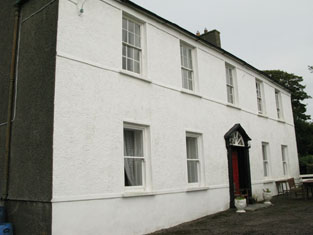
|
| Ballynamona House | John M. Travers was leasing this property together with over 135 acres to Thomas Beech in or at the time of Griffith's Valuation. A house is still extant at the site. | |
| Butlerstown House | Jonas Travers held Butlerstown House in fee at the time of Griffith's Valuation, when it was valued at £32. Lewis refers to it as the seat of J.Travers in 1837. The history of the house indicates that he had commissioned its building sometime in the early nineteenth century. It was still a Travers seat in 1894. See www.butlerstownhouse.com In 2009 it was for sale. |
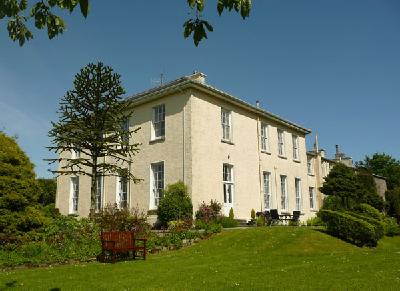
|
| Dunworley Cottage | William Hawke was leasing this property from Joseph Bennett at the time of Griffith's Valuation, when it was valued at £7 5s. It is still extant. | |
| Lissycrimeen House | Occupied by George Travers, leasing from Jonas Travers at the time of Griffith's valuation, when it was valued at £13 10s. Some old wall boundaries are the only physical evidence at the site. | |
| Rathbarry Vicarage/Rectory | Lady Carbery was leasing Rathbarry Vicarage to Rev. H. Stewart at the time of Griffith's Valuation, when it was valued at £20. Labelled as Rectory on the later 25-inch Ordnance Survey map, it is now known as Rathbarry House. |

|
| Milltown Place | Arthur Aylmer was leasing this property from Lady Carbery at the time of Griffith's Valuation, when it was valued at £17 5s. Aylmer was a younger son of the Aylmer, Donadea, county Kildare, family. His mother was Jane Evans-Freke, a daugher of the 1st Lord Carbery. He was later to succeed to the title of Baron Aylmer. By the 1890s the building at the site has been divided into a school and the Constabulary barracks. A smaller building exists at the site now. | |
| Kilkeran House | Kilkeran House was leased by Charles B. Baldwin to Anne Galway at the time of Griffith's Valuation, when it was valued at £16. Lewis refers to it as the seat of M. Galway in 1837. In 1814 Leet refers to it as the seat of Charles Connell. In the 1870s it was the residence of William Woods. A house still exists at this site. | |
| Ring Arundal | Jasper Lucas was leasing a house and extensive mill complex from the Smith-Barry estate at the time of Griffith's Valuation, when its combined value was £23. The mill is not present on the 25-inch Ordnance Survey map of the 1890s. The house is still extant. |

|
| Lackenduff House | Thomas Lucas was the owner of this property, unoccupied at the time of Griffith's Valuation, when it was valued at £15 10s. Lewis refers to Lackenduff House as the seat of J. Lucas in 1837. It is still extant and occupied. |
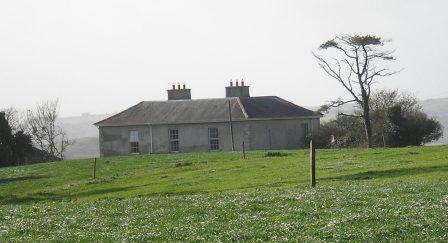
|
| Ring House | Ring House was being leased by Henry Austin to Henry B. Beamish at the time of Griffith's Valuation, when it was valued at £8 10s. There is still a house at the site. |

|
| Richfordstown House | Thomas Lucas was leasing this property from the Smith-Barry estate at the time of Griffith's Valuation, when it was valued at £26. It was the seat of Jasper Evans Lucas in 1814. In the 1870s John R. Lucas was the owner of the property. There is now a large farming enterprise here, as well as a house which may have replaced the earlier house. |

|
| Concamore House | James Nelson Crofts was leasing this property from Lady Carbery's estate at the time of Griffith's Valuation, when it was valued at almost £10. He was the fifth son of William Crofts of Velvetstown and was married to Dora, daughter of Jasper Lucas, of Richfordstown, Clonakilty. There is still an extant house at the site. | |
| Barryshall | Barryshall was held in fee by the Smith-Barry estate at the time of Griffith's Valuation, when it was valued at £15. In 1837, Lewis referred to it as the seat of J.Lucas. In 1894 Slater refers to it as the seat of George Lamb. In 1942 the Irish Tourist Association Survey stated that the house had been erected by the Barry family in the mid eighteenth century. Barryshall is still extant. |

|
| Timoleague House | In 1837 Lewis refers to Timoleague House as the seat of G. Travers. At the time of Griffith's Valuation, it was held in fee by Robert Travers and valued at £21. This house was burnt in December 1920 along with the ancient castle nearby. The Travers family built another house close by which is still extant and occupied. |
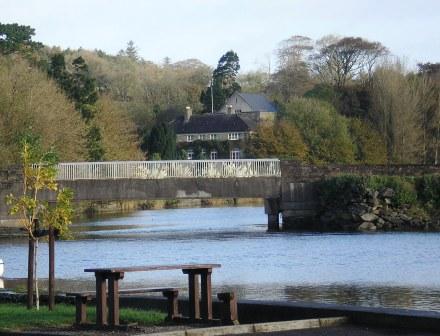
|
| Ummera | Robert Travers was leasing this property to Samuel McCaul at the time of Griffith's Valuation, when it was valued at £14. Lewis refers to it as the seat of Rev. B. Swete in 1837. In 1814 Leet notes Ummery as the seat of Rev. A. Sealy. Ummera House is still extant. |

|
| Lettercollum House | Lettercollum House was built by members of the Beamish family in the 1860s and occupied by them until the twentieth century. It served as a convent for the Sisters of Mercy and was later run as a guesthouse. It is now the focus of the Lettercollum Kitchen Project. |

|
| Coppinger's Court | Built by Sir Walter Coppinger in the early seventeenth century and partially destroyed in the 1641 Rebellion. Described by Bence-Jones as an impressive semi-fortified house. By the mid nineteenth century it had fallen into ruin and is not mentioned in Griffith's Valuation, when the lessor of the surrounding land was Lady Carbery's estate. |
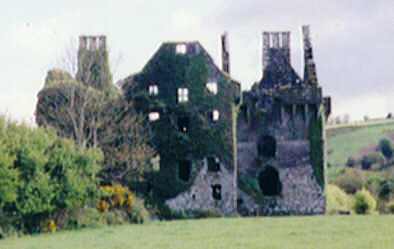
|
| Cashelmore House | In 1851 Thomas Beamish was leasing this property from Richard Longfield O'Connor when it was valued at £18. Lewis refers to it as the seat of J. Beamish in 1837. It was the residence of John Beamish in 1814. Buildings are still extant at the site. | |
| Kilhessan Lodge | James Jellett was leasing this house from the Poole estate in 1851 when it had a valuation of £13. A house is still extant at the site. | |
| Kilmeen Glebe (East Carbery) | Reverend Edward Alcock was leasing this property from the Ecclesiastical Commissioners in 1851 when it was valued at £23. Lewis notes that there were large plantations around the house in 1837, when it was the seat of Reverend E.H.Kenney. In 1944 the Irish Tourist Association Survey reported that it was then the residence of Rev. Gorman. Buildings are still extant at the site. | |
| Bennetts Grove | Leased by Francis Bennett to William Beazley at the time of Griffith's Valuation, when it was valued at £13 10s. Lewis refers to it as the seat of Herbert Gillman in 1837. In 1814 it was the seat of Francis Bennett. The original house seems to have been replaced by farm buildings. | |
| Caherconway House | Leased by Nicholas Cummins to Daniel Bechinor [or Buchinor] at the time of Griffith's Valuation, when it was valued at almost £8. | |
| Oak Mount (Kilmeen) | Held in fee by James Gillman at the time of Griffith's Valuation, when it was valued at £17 5s. Lewis referred to it as the seat of J. Gillman in 1837. In 1944 the Irish Tourist Association Survey refers to Oakmount as "a substantial farm dwelling". There is still an extant house at the site. | |
| Coolnaconarty House | Held in fee by Herbert Gillman at the time of Griffith's Valuation, when it was valued at £6. Not labelled on the 1st edition Ordnance Survey map but named Coolnaconarty House on the 25-inch map of the 1890s. It is no longer extant. | |
| Millfield House (Ross) | This house, with a mill valued at £40, was leased by William Limerick to Henry Morrow in 1851, when the house was valued at £12 5s. Lewis notes Millfield as the seat of Lieut. Lloyd, RN, in 1837 while it is noted by Leet as the residence of Roger Sweeny in 1814. The mill is labelled Ross Mill on the 25-inch map of the 1890s. There is still an extant house at the site as well as the remains of some mill buildings. | |
| Cahermore House | In 1851 Thomas Hungerford was leasing Cahermore House from the Bishop of Cork's estate,when it was valued at £32. It was owned by Henry Hungerford in 1906 and valued at over £44. Taylor and Skinner's map of 1783 as well as Wilson in 1786 also mention Cahermore as a Hungerford residence. In 1944 the Irish Tourist Association Survey noted that Cahermore had been burnt during the War of Independence and was then derelict. Donnelly indicates that it was burnt in June 1921. It is no longer extant. | |
| Burgatia House | Leased by Robert Starkey from the estate of the Bishop of Cork at the time of Griffith's Valuation when it was valued at £12. Donnelly indicates that this house was occupied by Thomas Kingston when it was burnt in February 1921 during the War of Independence. It is no longer extant. | |
| Easton House | In 1851 Jane Smyth was leasing this property from the Bishop of Cork's estate when it was valued at £13 15s. | |
| Milleen | Rev.William Jennings was leasing this property from the Hungerford estate at the time of Griffith's Valuation, when it was valued at £19 15s. In 1944 the Irish Tourist Association Survey lists Milleen among the houses in the area which had been burnt during the War of Independence and were then derelict. It is no longer extant. | |
| Creggane House | Creggane House was in the possession of John [Lichfield] at the time of Griffith's Valuation when it was valued at almost £9. It was leased to Robert Starkey at the time. A more substantial house is shown on the later 25-inch map of the 1890s. In 1885 Walford described Francis Evans Bennett as of "Creggane". A house is still extant at the site. | |
| Derry House (Ross) | Family records indicate the original house at Derry was bought by Bryan Townsend, son of Richard, the Cromwellian officer, in the 1680s. This house was a short distance from the current house which was built by Reverend Horatio Townsend in the early years of the nineteenth century and was held in fee by Reverend Chambre Townsend in 1851 when it was valued at £44. Earlier, in 1786, Wilson referred to Derry as a Townsend seat. It was substantially damaged when it was burnt in April 1921 during the War of Independence. . At the time it was the residence of Alexander Sullivan, a well-known barrister. In 1944 the Irish Tourist Association Survey noted that it was still derelict following the 1921 burning. The centre portion of the house and a substantial farm still exist at the site. |

|
| Roury House | Occupied by William Bleazby at the time of Griffith's Valuation on lease from the Townsend estate and valued at £12 5s. In 1885 Walford refers to the seat of William J. Bleazby as Bleazby Hall. A house still exists at this site. | |
| Castle Downeen | James Courcey was leasing Castle Downeen from Rev. John Smyth in 1851 when it was valued at £23 10s. Lewis refers to the house as the seat of R. Smith in 1837. Shown as a Smith residence on Taylor and Skinner's 1783 map. In 1944 the Irish Tourist Association Survey refers to "Duneen" as "now a farmer's dwelling". It is now a ruin. | |
| Ross Abbey House (Rosscarbery) | Rev. John Hamilton was leasing this property from Elizabeth Jago at the time of Griffith's Valuation, when it was valued at £12. This house no longer exists. | |
| Cashel House (Kilmacabea) | William Wolfe was leasing this property, then valued at £12, from Miss Wheeler, at the time of Griffith's Valuation. Local records suggest the family were associated with this house since the eighteenth century. The original house is no longer extant and a modern house exists at the site now. | |
| Connonagh House | John Morris was leasing this property to Barbara Jago in 1852 when it was valued at almost £8. There is still an extant house at the site. |
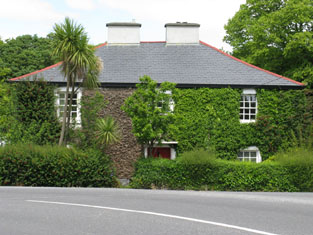
|
| Westwood/Benduff Cottage | Catherine French held this property from William Morris at the time of Griffith's Valuation. On the 25-inch Ordnance Survey map of the 1890s it is labelled Westwood. In 1906 it was owned by Michael French and valued at £13 10s. There is still an extant house at the site. | |
| Lisselane | Bence-Jones indicates that this house was built by Wiliam Bence-Jones in 1851-53. A small property, owned by the family, had existed there prior to the building of the current house. The house was sold by the Bence-Jones family in 1930. The spectacular gardens are now open to the public. In 2014 the lisselan estate was offered for sale. See www.lisselan.com. |

|
| Kincraigie | Willam Burton Leslie was leasing land and out-offices from the Ladies Boyle at the time of Griffith's Valuation. The property is labelled Woodview on the first edition Ordnance Survey map. The property later bacame Kincraigie where he lived with his wife, Jane Florence McCartie, the widow of Horace Townsend. Jane's son, also Horace, owned the house until the early twentieth century. Later the home of the Travers family and now a ruin. | |
| Knockbrown | A property built after the 1st Ordnance Survey was published. It was held in fee by Thomas B. O'Callaghan in 1851 when it was valued at £8. There is still an extant house at the site. | |
| Castle Salem | This property had formerly belonged to the McCarthys but was acquired by William Morris and re-named Castle Salem. In 1786 Wilson refers to it as the seat of the Morris family but by the publication of the first Ordnance Survey Map it is labelled "Benduff Castle or Castle Salem, in ruins". This property, developed over several centuries, is still extant and occupied. |
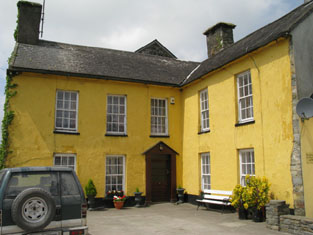
|
| Ballynagornagh House | In 1786 Wilson refers to "O'Barley-Hill" as a seat of Mr. Morris. At the time of the publication of the 1st Ordnance Survey the original Ballynagornagh House is described as "in ruins". However, a house has been restored on the site by the 1890s when it appears on the 25-inch Map. At the time of Griffith's Valuation, the townland was still in the possession of the Morris family though much of it was leased to the Donovans. The house was valued at £4 5s. A substantial farm occupies the site now. | |
| Rossmore (Kilmeen) | At the time of Griffith's Valuation, Jeremiah Collins was leasing Rossmore from the superioress of the Presentation Convent in Cork. The house was valued at £13 at the time. In 1944 the Irish Tourist Association Survey referred to Rossmore as a "substantial farm dwelling", a description which is still valid. |

